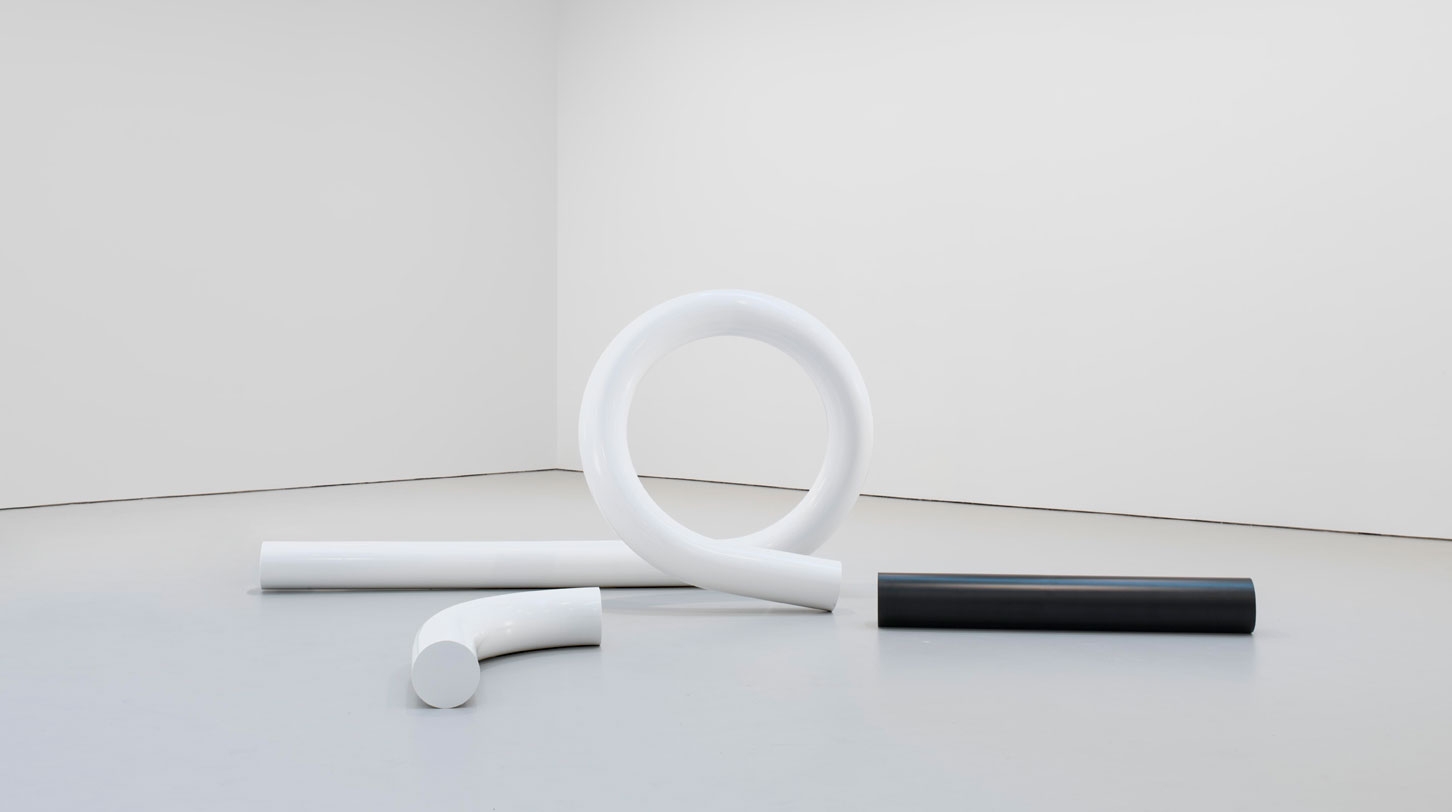It’s not by chance that Carol Bove’s The Equinox looks like the Ikea of modernist art, albeit with much higher production values. It’s as if the artist spent a few days in MoMA’s Painting and Sculpture galleries only to pilfer from the institution’s well-known art-historical playbook, making it generically her own. The White Tubular Glyph (2012) – with its shiny, powder-coated steel tube looping, snakelike, across the low white plinth on which the seven sculptures that comprise the show are placed – resembles a Robert Morris geometric sculpture downsized, neutered and pulled into a kind of a curvy, minimalist noodle. If it were much, much larger, it also, at first glance, could easily be dumped in the front plaza of some big, faceless bank’s corporate headquarters, a fat, blank object filling up space for the sake of filling up space – the kind of sculpture Bove and many others would call ‘plop art’, which the sculpture handily references.
With Terma (2013), another dude of Morris’s generation, Sol LeWitt, gets his dressing-down. The artist’s well-known variations on the white cube, which form patterns of criss-crossing, aggregating structures, is turned by Bove into dull brass grids growing unevenly off the top of a pedestal like a malicious, minimalist cancer. Chesed (2013) is composed entirely of irregularly overlapping I-beams, a brutish building material toppled like little tinker toys. One would almost expect to find a Richard Serra-like blob of lead somewhere, as if he came all over the floor in a gurgle instead of a Splash (1968–70).
Situated in such close proximity to the museum’s fabled permanent collection, is The Equinox, then, a pointed feminist critique of Alfred H. Barr, Jr’s outsize influence, a browbeating of big-business, big-patriarchy art history? Certainly. But there’s more going on here. One could say that at stake is artwork’s art-ness, as foregrounded by the plinth. It’s only 10 cm high, but it’s quite a demarcation from ‘the real world’, though it didn’t stop Bove from hauling up to MoMA a beat-up, rusted bed from some forsaken lot in Red Hook, Brooklyn. Disgusting Mattress (2012) is dumped unceremoniously next to the other, more cultivated objects. It’s really a funny, pitiful thing, with its springs bent out of shape as if styled by some Looney Tunes cartoonist.
This is as real-world as it gets. On the one hand, the mattress offers a taut retort to the privileged position that much modernist artwork is accorded. On the other hand, it itself becomes privileged in this privileged setting – a frog turned into a prince thanks to the symbolic sheen of Bove’s low-slung platform. The Equinox proves how quickly the tables can turn, and how infinitely small the difference can be between trash and treasure.
This article was first published in the December 2013 issue.
